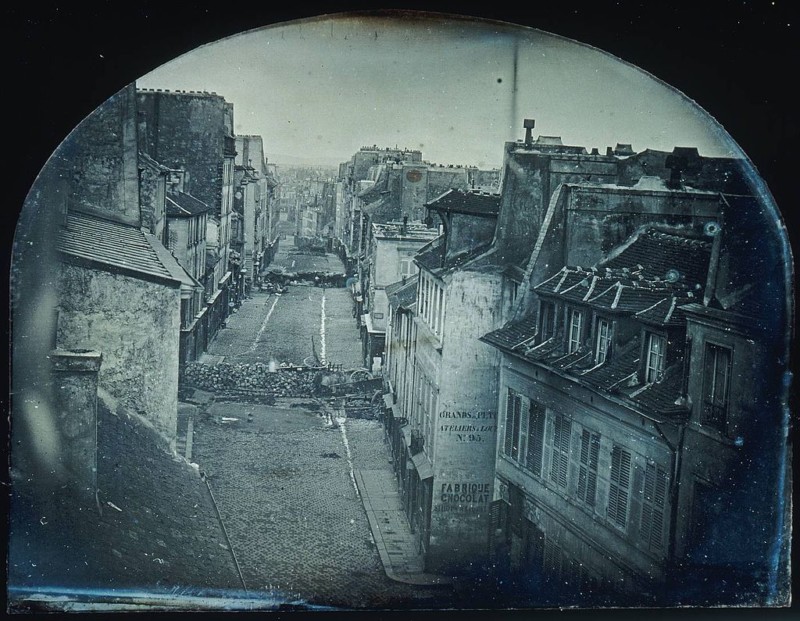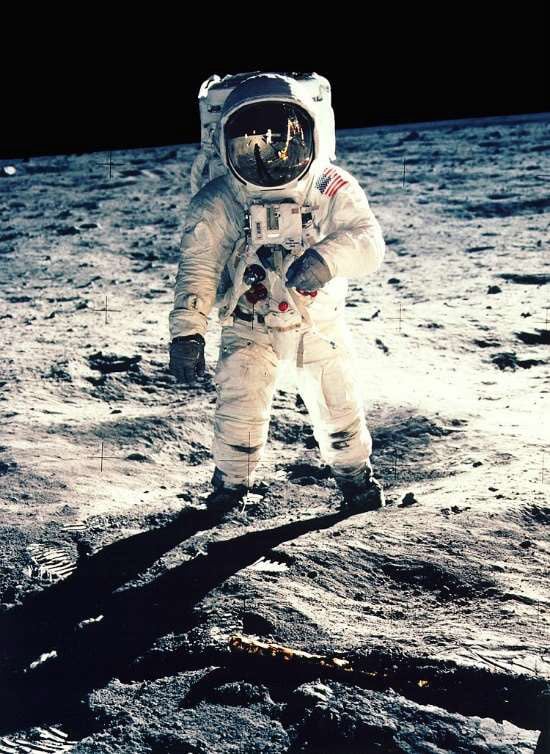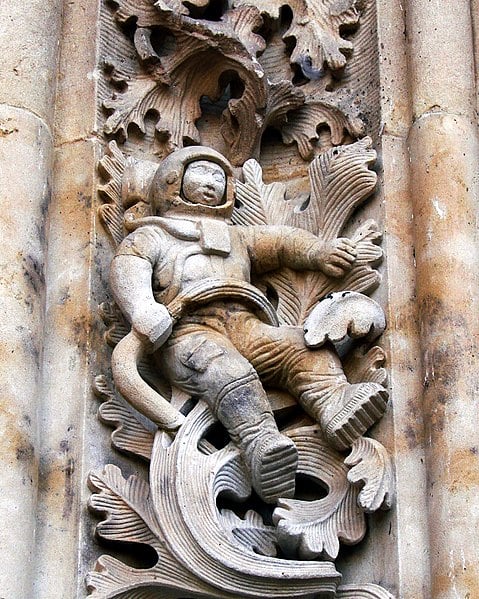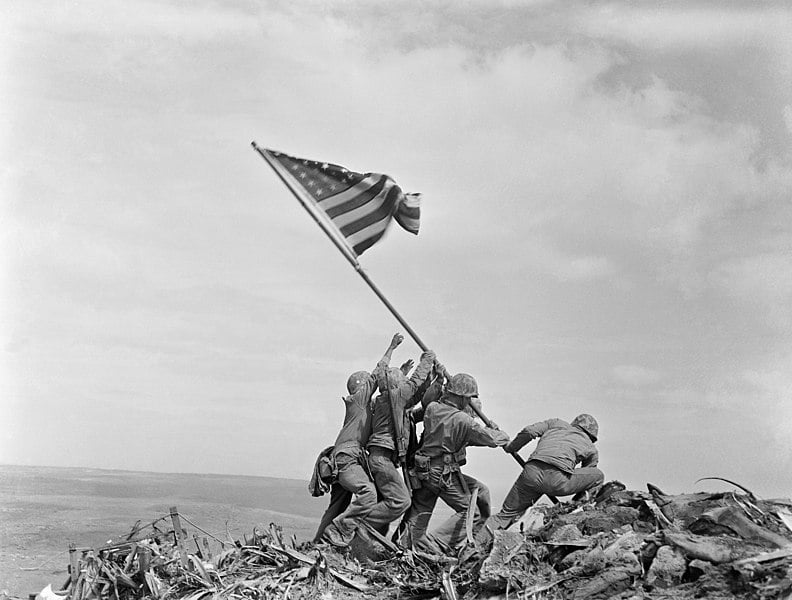
![]()
It’s funny how deceiving a photograph can be. I wouldn’t blame anyone for thinking that this roller skater has turned his head to check out the girl on her phone as he skates past her. Without any context, that does appear to be the story here.
In actuality, he’s approaching her (and me) as he skates backward down the sidewalk. He’s turned his head so he can see where he’s going. See how some context can change the narrative?
You often hear people compliment a photographer’s image for making or telling a great story. However, is that “great story” a true story, or even a story at all?
Usually it’s the “story” the photographer has decided to feed you, even if he or she is not cognizant of the inherent biases that led them to make the image. Even then, most of the “story” is actually conjured up by the viewer’s imagination, since a single static image lacks the context necessary to tell a story.
![]()
Mind you, a group of well-thought-out documentary images that often make up a photo essay can present a coherent story, but more often than not the story being fleshed out is the invention of the photographer (or his/her editor) and often massages or flat-out contradicts the reality of the situation. Think of how Trump is portrayed in photographs made for left-leaning news outlets vs right-leaning ones.
But is “reality” actually a necessary ingredient in the recipe that makes for an engaging, memorable photo?
My favorite images are those loaded with enough ambiguity that there is no definitive right way to read them, and as such you’ll get differing interpretations from various viewers.
I find that when I come across such images, I usually stick around longer as I try to resolve what it is I’m looking at and why the photographer chose to present the scene or subject in such a manner. When they’re really great, I’ll often come back to enjoy the image time and again.
Movies often employ ambiguity as a way to engage the viewer’s imagination. Think of the ending to “Being There” (1979) starring Peter Sellers, or “Jacob’s Ladder” (1990) starring Tim Robbins. “Memento” (2000) starring Guy Pearce is chockablock with ambiguity and remarkably compelling.
In Steven Spielberg’s 1975 movie Jaws, he showed us the underwater action through the eyes of the shark instead of just showing us the shark. It was far more effective because it sparked our imagination and conjured outright fear. Ridley Scott’s Alien (1979) employed this same device by not giving us a clear image of the alien. We had to use our imagination to resolve the shadowy extraterrestrial interloper, making it far more terrifying than anything he could have delivered on screen.
![]()
Music is another genre of art where ambiguity in lyrics can trigger the imagination. When you type “What does Lucy…” into Google’s search field, the third suggestion from the top is “what does Lucy in the Sky with Diamonds mean?” Click it and you’ll get 2,710,000 results. It seems a lot of people want to know the meaning behind John Lennon’s famous lyrics. Type “What does hotel…” into Google’s search field and “what does Hotel California (from the album Hotel California, by the Eagles) mean” is the first suggestion offered by Google. Click it and you’ll get a whopping 155 million results. So what do these two songs have in common? Ambiguous and intriguing lyrics open to interpretation.
You really can’t discuss storytelling in images without mentioning photojournalism. The first recorded image used in conjunction with a news story was published in 1848 by a weekly French newspaper called L’Illustration. Titled “Barricades on rue Saint-Maur,” the image in question lacks any context whatsoever and therefore tells no story on its own. Nor was it meant to. Rather, its presence and purpose in the article were to augment the written word. It’s the article that tells the story, not the photograph. The photograph is merely a visual aid.

By now I suspect some of you are already chomping at the bit to correct me with, “Oh yeah, well what about this or that famous, award-winning image,” etc.
In preparing to write this piece I wondered if there didn’t exist certain iconic photographs that accomplished the task of telling a story in clearly unambiguous terms. After reviewing many famous and important images from history I selected three that were epochal for their time. If I was going to try to make the argument that pictures don’t tell stories, I figured I better be able to defend my position against some of the most incredible images ever made.
The first image needs no explanation. (That statement alone suggests my premise is wrong and that a single image does have the power to tell a story.) In it we see Buzz Aldrin in full space gear standing in the Sea of Tranquility. In his gold-coated visor we see the reflection of the lunar module (called Eagle) and Neil Armstrong, the photographer. In Armstrong’s hand we can barely make out a box-shaped object, which we know to be the 70-millimeter Hasselblad he used to document the voyage.

It’s arguably the most incredible photograph ever made. But does it tell a story?
“Of course it does,” you might think. I would argue that the context comes from the written history and not from the image alone. This image could very well have been created in Stage H at Shepperton Studios, England by Stanley Kubrick. Obviously it wasn’t, but you get my point. Without context, who knows with any certainty what we’re looking at.
And to prove my point, let’s consider another image of an astronaut. Unlike the iconic image of Buzz Aldrin on the lunar surface, this image is of an astronaut carved in sandstone adorning the portico of a 16th-century cathedral in Salamanca, Spain. Puzzling, isn’t it? Especially when you consider the fact that the first person to break earth’s outer atmosphere and cross the threshold into the cold, black vacuum of space was Yuri Gagarin in 1961, two and a half centuries later.

The main difference between these two astronaut images is one has a copious amount of context behind it that tells the story of man’s quest to reach the stars, while the second lacks any context whatsoever. I would argue that the second image sparks the imagination even more so than the first, for obvious reasons.
But let’s now extinguish that spark with some context. The astronaut carving is not the awe-inspiring work of a 16th-century stonemason with an overactive imagination but a 20th-century creation placed there in 1992 during a restoration of the cathedral. Artisans at the time integrated modern and contemporary motifs into the restoration work and one of them elected to include a modern-day astronaut. Story told; mystery solved. The photo went from exciting to meh in one short paragraph.
With our second example we’re going to take a drastic change in direction, from outer space to World War Two, and specifically the Pacific theatre.
On February 23rd, 1945 Sgt. Lou Lowery, a Marine photographer working for Leatherneck Magazine, climbed Mount Suribachi at the southwest end of Iwo Jima, an island in the northwest Pacific Ocean, and snapped photos of Marines raising the American flag atop the mountain.

“I know that photo,” I’m sure most of you are thinking. I’m equally sure many of you are shaking your head incredulously, thinking “Lowery was NOT the photographer of the iconic Iwo Jima photo.” And you’d be right.
You see, the world-renowned photo that depicts five U.S. Marines and a Navy sailor raising the flag at Iwo Jima was actually taken by AP photographer Joe Rosenthal. He captured the moment when the Marines on that hilltop replaced the first and smaller American flag with a larger one.
While Sgt. Lowery was present for the raising of the first flag some 90 minutes earlier and did get some good shots of that event, he was already heading back down the mountain to replace his broken camera when Rosenthal snapped the raising of the second, larger flag.
Rosenthal’s Pulitzer Prize-winning photograph was published in thousands of newspapers and went on to become one of the best-known war photographs of the 20th century.
As for Lowery’s first flag-raising photograph, I’m sure it’s also nice.
Then there’s another vastly different story, one you could only get by interviewing the Marines who were present that fateful day. Undoubtedly the capture of that famous photograph would make up but a sentence or three in their telling of events that transpired back in February 1945. After all, they were busy fighting a war on that mountain.
Now you have the actual story of the Iwo Jima flag-raising photograph, none of which could be garnered by simply looking at the photo itself. The photo, while filled with visually compelling content, lacks context, aka story.
And if that’s not convincing enough for you, consider this: What if you were in high school history class and your teacher told you that this photo showed enemy forces taking down the American flag after conquering some U.S. held hilltop in the Pacific? Unless you already knew the real story, you’d likely have no reason to doubt your teacher, right?
Let’s jump ahead 23 years to our third and final example, yet another famous, Pulitzer Prize-winning war photograph. The title says it all: Saigon Execution. Many of you will instantly know the photograph by its title alone.
As one of the world’s most famous images turns 50, @AP shares an interview with the late photographer Eddie Adams, who talked about what it was like to capture an execution in Saigon during the Vietnam War. Read more here: https://t.co/tRjQrmI6w1 pic.twitter.com/Ilxjqn23Gv
— The Associated Press (@AP) February 1, 2018
On February 1st, 1968, during the height of the Tet offensive in Vietnam, AP photographer Eddie Adams captured one of the most compelling and brutal images of the war. In it, Brig. General Nguyen Ngoc Loan, South Vietnam’s National Police Chief, is seen executing Viet Cong officer Nguyen Van Lem with a snub-nosed revolver on a street in Saigon. The trigger has already been pulled and the bullet is traveling through the prisoner’s head. The image, captured at 1/500th of a second, shows Van Lem’s head snapping to the side from the energy exerted by the bullet while Loan’s hand appears raised slightly from the recoil of the weapon.
The image was published all over the world and Adams was awarded the Pulitzer Prize for it in 1969. Many have suggested that the shocking and horrific event captured in that photo galvanized the anti-war movement and helped to end U.S. involvement in Vietnam.
The context missing from the photo is the fact that Van Lem had been captured at the site of a mass grave of over 30 South Vietnamese civilians. Further, the slain prisoner in the photo had reportedly killed one of Loan’s colleagues, a South Vietnamese officer, his wife, and six children. That of course does not justify an execution sans trial, conviction, and sentence, but it does give perspective to Loan’s actions. The photo in no way tells that part of the story.
That’s because photographs don’t tell stories. Don’t get me wrong, photography plays an important, if not vital, role in storytelling, but mostly as a visual aid.
![]()
So if you’re out there trying to capture moments that tell a story, consider what story it is you want the viewers to take away. Don’t try to force a story onto them because you’ll likely fail. Rather, learn to recognize the ambiguity in your photography and, as much as you can, try to objectively read between the lines and suss out how a viewer might extrapolate a story from your images. If you wish to push the viewer in a certain direction, use a title or short caption to lead them down your path. Take care, though, because sometimes too much context can strip the fun right out of a photograph.
If you wholeheartedly disagree with me, please mention an iconic image in the comments section that rebuts the points I’ve tried to make here. Thanks.
Happy shooting.
About the author: Dave Bottoms has spent the past decade exploring the streets of Toronto, Canada, where he calls home. The opinions expressed in this article are solely those of the author. Around Bottoms’ neck hangs a Fujifilm X-Pro2 sporting an 18mm f/2 prime most of the time. Dave is also an Admin for the Toronto Street Photography and Canadian Street Photographers groups on Facebook. When not taking pictures he is a freelance writer/editor for hire and is currently working on a street/documentary photography book of his work. You can find more of his work on his Instagram and blog.

